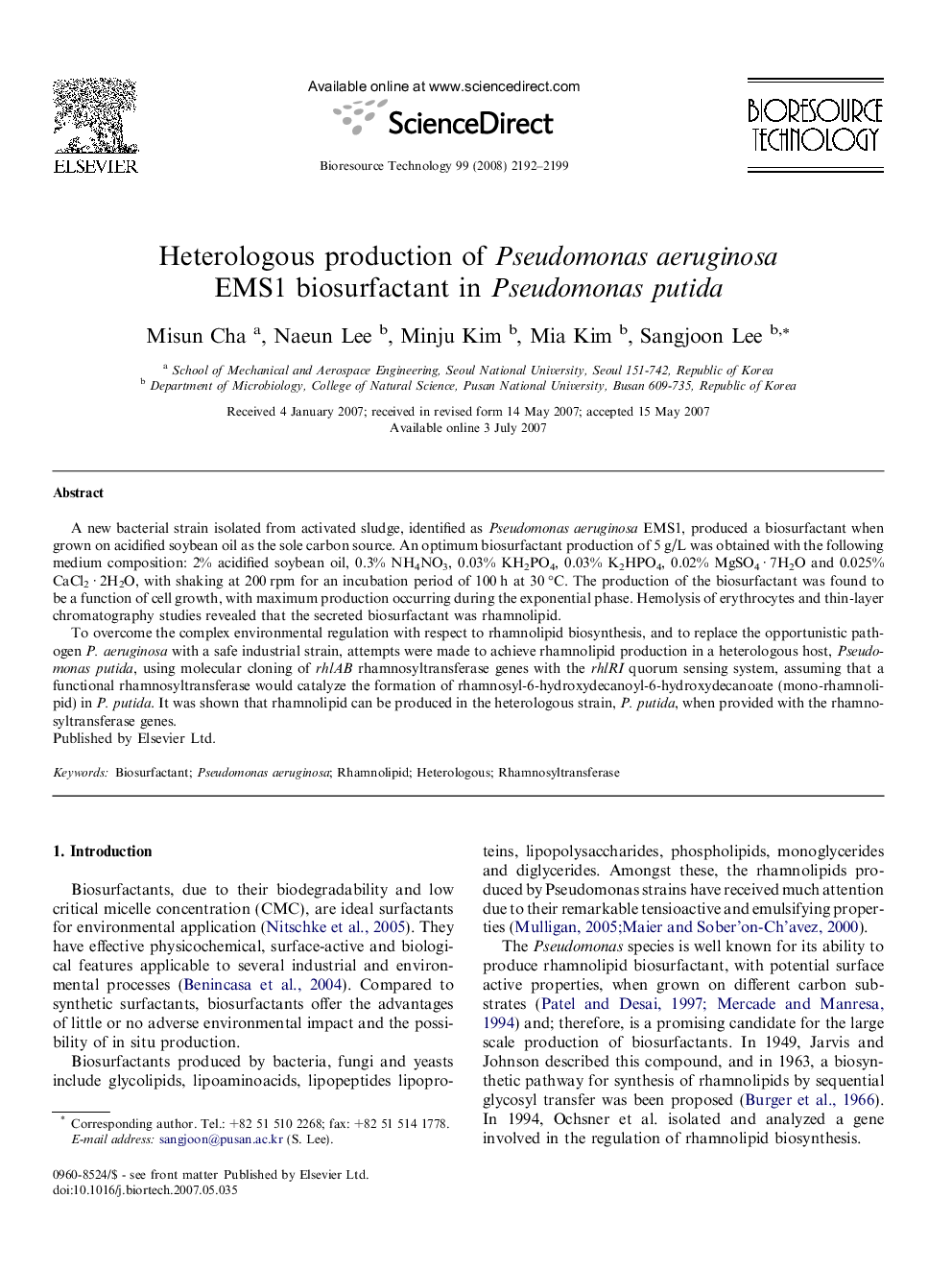| Article ID | Journal | Published Year | Pages | File Type |
|---|---|---|---|---|
| 685819 | Bioresource Technology | 2008 | 8 Pages |
A new bacterial strain isolated from activated sludge, identified as Pseudomonas aeruginosa EMS1, produced a biosurfactant when grown on acidified soybean oil as the sole carbon source. An optimum biosurfactant production of 5 g/L was obtained with the following medium composition: 2% acidified soybean oil, 0.3% NH4NO3, 0.03% KH2PO4, 0.03% K2HPO4, 0.02% MgSO4 · 7H2O and 0.025% CaCl2 · 2H2O, with shaking at 200 rpm for an incubation period of 100 h at 30 °C. The production of the biosurfactant was found to be a function of cell growth, with maximum production occurring during the exponential phase. Hemolysis of erythrocytes and thin-layer chromatography studies revealed that the secreted biosurfactant was rhamnolipid.To overcome the complex environmental regulation with respect to rhamnolipid biosynthesis, and to replace the opportunistic pathogen P. aeruginosa with a safe industrial strain, attempts were made to achieve rhamnolipid production in a heterologous host, Pseudomonas putida, using molecular cloning of rhlAB rhamnosyltransferase genes with the rhlRI quorum sensing system, assuming that a functional rhamnosyltransferase would catalyze the formation of rhamnosyl-6-hydroxydecanoyl-6-hydroxydecanoate (mono-rhamnolipid) in P. putida. It was shown that rhamnolipid can be produced in the heterologous strain, P. putida, when provided with the rhamnosyltransferase genes.
